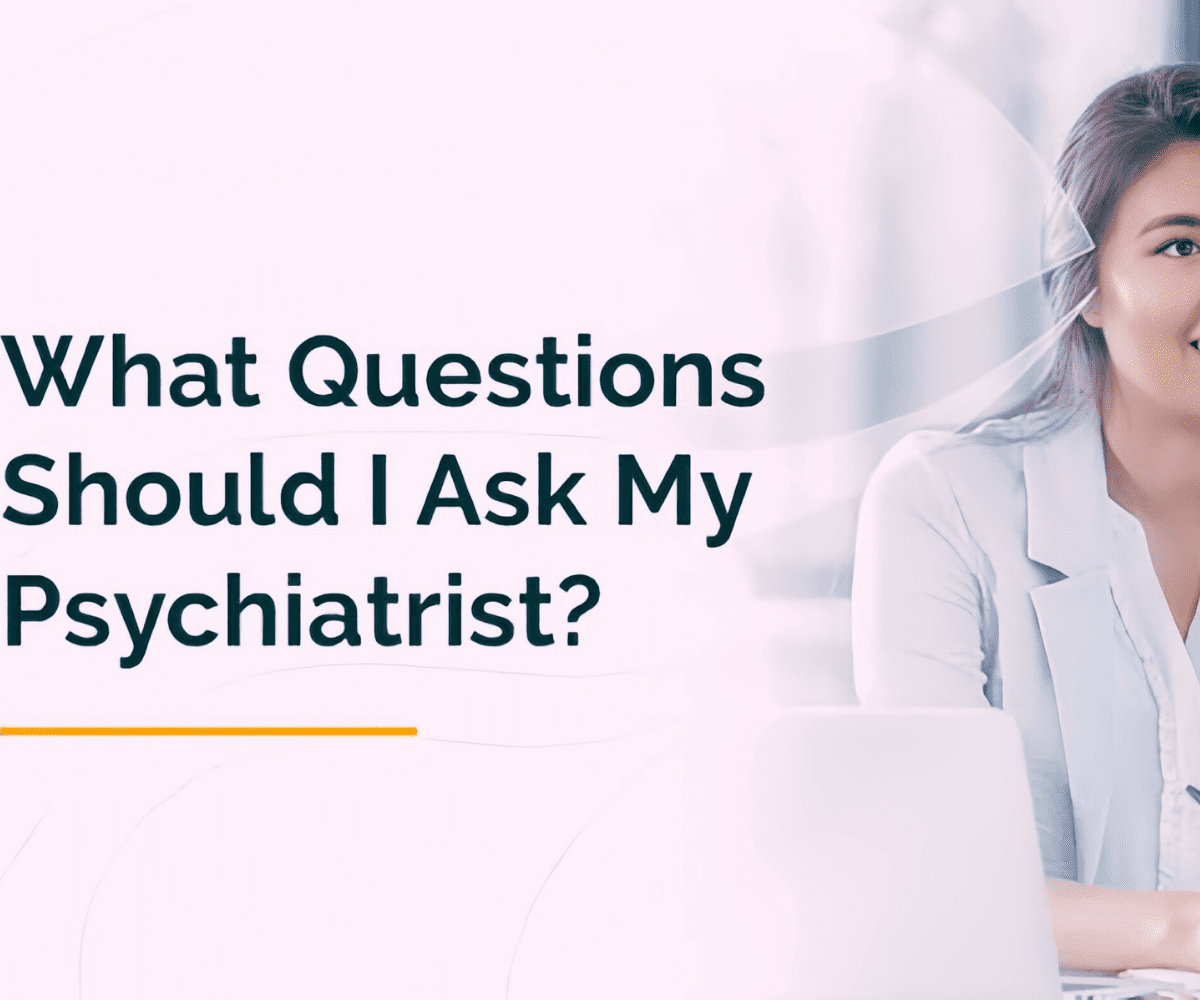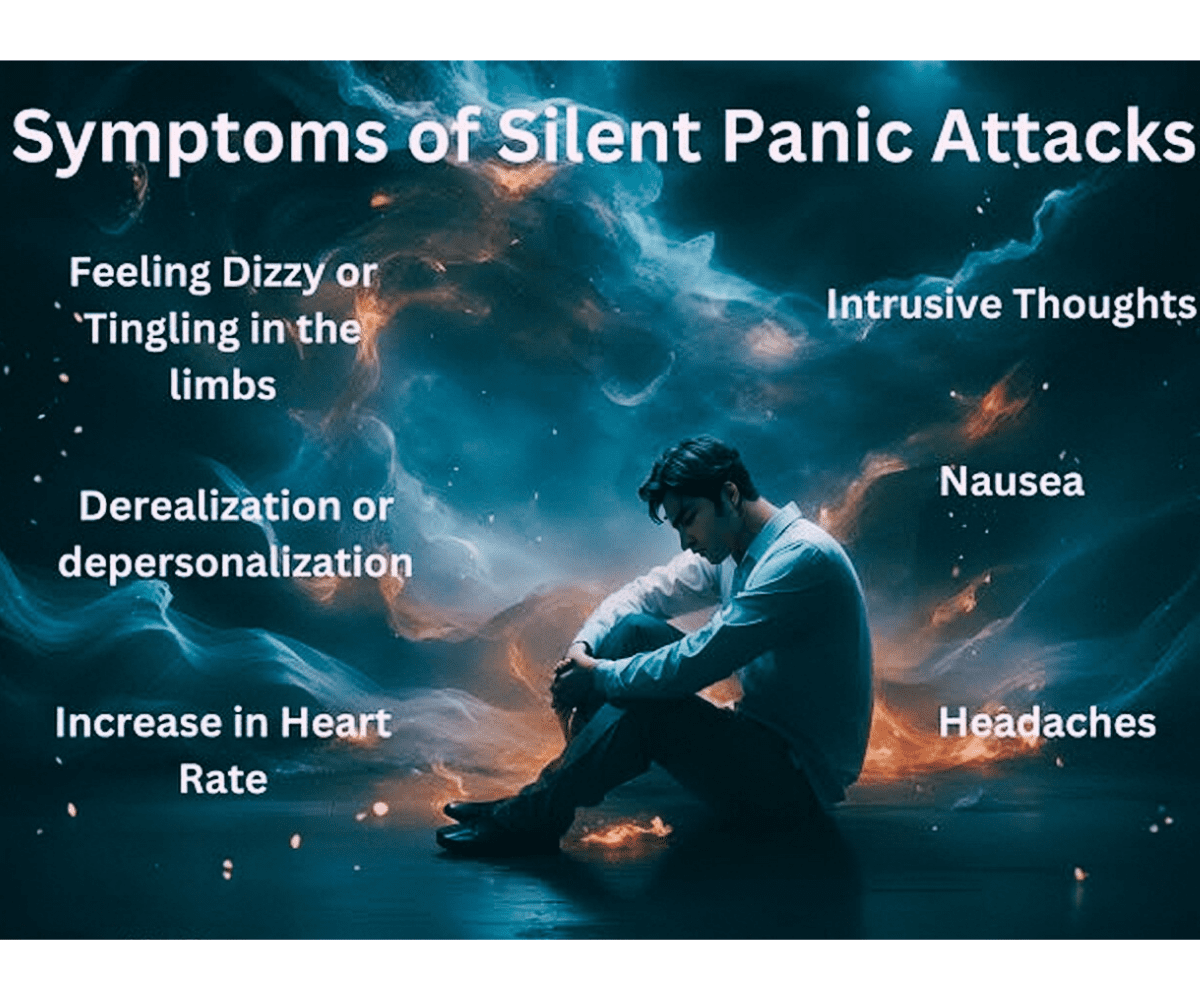Understanding Silent Panic Attacks: A Comprehensive Guide
Understanding Silent Panic Attacks: A Comprehensive Guide

Panic attacks are moments when you feel very scared and worried, and your body feels strange. They can happen suddenly. Some people think panic attacks only look like people breathing fast or crying loudly, but some people have what’s called silent panic attacks. These attacks can be just as hard to deal with, but because they happen inside, others might not notice them. In this guide, we’ll talk about silent panic attacks, what causes them, what they feel like, and how to deal with them.
What Are Silent Panic Attacks?
Silent panic attacks, also called “hidden” or “inside” panic attacks, happen when someone feels very scared inside but doesn’t show it outside. They cause strong feelings in the body and mind, but you can’t see any signs of worry on the person’s face or body. Unlike regular panic attacks, where people might shake, cry, or breathe fast, silent ones mostly stay hidden, so others might not know what’s going on.
When someone has a silent panic attack, they might feel really scared inside, like something bad is about to happen or their heart is beating fast. But, they don’t show any signs of panic on the outside. This makes it hard for others to know they’re having a panic attack, and the person might even hide how they feel from others.
Causes of Silent Panic Attacks
Silent panic attacks can arise from various factors, including:
- Stress and Anxiety: A lot of stress, like from work, relationships, or life stuff, can cause sudden panic attacks in people who often feel anxious.
- When people go through a very scary event or have PTSD, they might have silent panic attacks because they are always on high alert and easily scared.
- Certain health problems, like issues with the thyroid, heart, or breathing, can make silent panic attacks more likely to happen.
- Genes and Brain Chemicals: Studies show that differences in brain chemicals like serotonin and norepinephrine, plus your genes, might contribute to panic disorders, including silent panic attacks.
- Using or stopping certain things like coffee, alcohol, or drugs can cause hidden panic attacks in some people.
Symptoms of Silent Panic Attacks
While the outward manifestations of silent panic attacks may not be apparent, the internal experience can be intense and debilitating. Common symptoms of silent panic attacks include:
- Rapid heartbeat or palpitations
- Shortness of breath or a feeling of being unable to catch one’s breath
- Chest pain or tightness
- Dizziness or lightheadedness
- Nausea or abdominal discomfort
- Chills or hot flashes
- Trembling or shaking (internally)
- Feelings of detachment or unreality
- Fear of losing control or going to go wild
These symptoms can be overwhelming and may cause the individual to feel a sense of impending doom or the need to escape the situation, even if there is no apparent danger.
Coping Strategies for Silent Panic Attacks

While silent panic attacks can be distressing, there are effective coping strategies that can help individuals manage and overcome these episodes:
- Breathing exercises like deep breathing or box breathing can help control stress and make panic symptoms less intense by regulating the body’s response.
- Relaxing and Paying Attention: Doing mindfulness stuff like meditation or slowly relaxing muscles can help keep you focused on now and calm down anxiety.
- Changing how you think can help you control your worries and stop sudden fear feelings.
- Get help from a pro: If you keep having silent panic attacks or they really mess up your everyday life, talk to a mental health expert like a therapist or counselor. They can give you good ways to deal with it and suggest treatments that might help.
- Changing how you live: Doing exercise, eating good meals, and handling stress each day can help you feel less worried and healthier overall.
- Having people like friends, family, or a support group who can understand and cheer you on when things get tough can really help.
Conclusion
Quiet panic attacks might not show on the outside like regular ones do, but they can still be really upsetting and mess up someone’s life. If you know what causes them, what signs to look for, and how to deal with them, people who have quiet panic attacks can start to feel better and more in charge. Don’t forget, getting help from a pro and having supportive friends and family can really help you get through quiet panic attacks.
FAQs
Q1: Can silent panic attacks be as severe as traditional panic attacks?
A1: Yes, silent panic attacks can be just as intense and debilitating as traditional panic attacks, despite the lack of outward signs of distress.
Q2: Is it possible to have a silent panic attack without realizing it?
Sure! Some people might not realize they’re having a quiet panic attack, especially if they don’t know what the signs are or if it’s not very strong.
Q3: Can silent panic attacks be a symptom of a underlying medical condition?
Sometimes, quiet panic attacks can happen because of health problems like issues with the thyroid, heart, or breathing. It’s important to talk to a doctor to make sure there aren’t any medical reasons behind it.
Q4: Can medication help manage silent panic attacks?
Yes, sometimes, a doctor might give you medicine like pills for anxiety or sadness to help control and make less strong those quiet panic attacks.
Q5: How can I support someone who experiences silent panic attacks?
A5: Being patient, kind, and not judging can really help someone with quiet panic attacks. Encourage them to get help from a doctor, understand what they’re going through, and be there to listen and support them when they’re struggling.”
Remember, even when you’re quietly feeling very scared, you’re not alone. By learning good ways to manage these feelings, getting help from experts, and having supportive people around you, you can learn to handle and overcome them.

